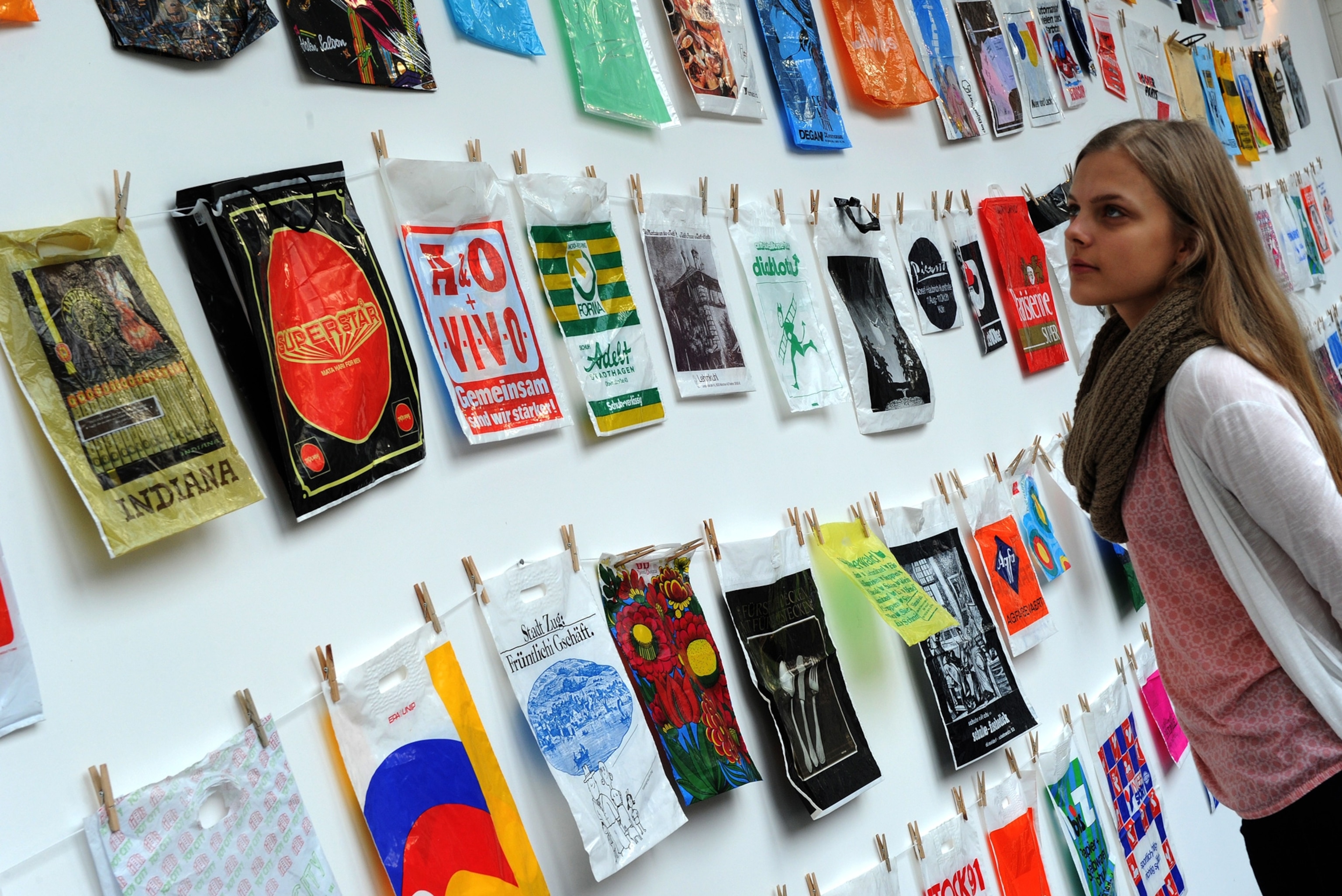
The Race to Save Historic Plastic Artifacts
Although plastic is a big problem in the ocean, museum conservators are rushing to save spacesuits, animation cels, and other pieces of history.
Mowgli of Disney’s The Jungle Book and Duchess from The Aristocats are frozen in single frames before Tom Learner’s eyes—pieces of history from an era of hand-painted animation cels. But Learner knows the plastic sheets have come to him at exactly the right time. Learner is a conservator, a chemist, and the top scientist at the Getty Conservation Institute in Los Angeles, and he wants to save modern materials.
Plastics are materials most often in the news as an environmental disaster. Persistent and pervasive, they have been found to leach chemicals, choke wildlife, and turn up as litter everywhere from mountaintops to the Mariana Trench.
Researchers like Learner, though, see plastics from a very different angle. These scientists and conservators work to understand the destruction and decay of plastic art and artifacts in order to save them for generations to come.
“Each generation is the custodian of an artwork for our lifetime,” says Learner. “We just make sure we hand off this material to the next generation in as good a state as possible.”
Conservators like Learner and his colleague, Odile Madden, are at the edge of discovery at all times. They’re racing to keep up with the breakdown of objects as diverse as animation cels, historic space suits, sculptures, and house paint. The oldest synthetic polymers, the “first plastics” as we think of them today, are more than 150 years old, and without close attention they might not be around for another 150. (Learn more about plastic, and how it is affecting our world.)
A Scientist’s Eye
Learner and Madden both approach their work as scientists. Backgrounds in chemistry allow the pair to delve into the molecular structure of the materials they study.
“There isn’t a lot of fluency in what plastic is,” Madden says. “We know an awful lot about metals—we grow up with an intuitive sense of what is gold and what is brass—but we don’t have that kind of ability to identify what a plastic is made of, or what polymer you’ve got.”
So the researchers turn to advanced chemistry. Plastics are based on polymers, big molecules constructed from long chains of repeating segments. But, as Madden says, “most polymers are not useful on their own, so they are modified in some way with additives.”
Plasticizers, fillers, colorants, antioxidants, heat stabilizers, UV absorbers, antifungal chemicals: the list of additives are a whirlwind of chemical genius.
“Polymers plus, plus processing,” says Madden as a shorthand. Once mixed up, this soup of polymers and other materials can be melted, cast, rolled, cut, or blown into a foam. But each addition and process changes the way that a plastic will react to heat, light, and especially time.
Plasticizers are one example. These chemical additives are small molecules added to a polymer to make the end material easier to melt and mold. According to Madden, a well-known plastic like PVC (short for polyvinyl chloride) could be made into an unplasticized item like a plumbing pipe, while heavily plasticized PVC can be used for shower curtains.
But plasticizers eventually leach out of plastic as acidic, corrosive “outgassing,” and speed plastic breakdown. Malcolm Collum, Chief Conservator and Engen Conservation Chair at the Smithsonian’s National Air and Space Museum, is designing a refrigerated, de-humidified, and highly ventilated display case for the space suit worn by Neil Armstrong in 1969. All of that technology is vital for slowing the breakdown of PVC pipes and rubber bladders that kept the astronaut alive on the surface of the moon. (Learn more about the history of space suits.)

Presumably, NASA’s top priority in creating the suits was not how they’d hold up in museums 50 years after the Apollo 11 mission. Now that they’re in collections, though, people like Collum are charged with their care despite limited options.
“With plastics,” he says, “it’s shrugging your shoulders and providing a more stabilized environment to try to stave off deterioration. There is no thrilling treatment result with any kind of plastic collections.”
It’s good that the researchers have some general principles to fall back on. The Smithsonian collections are a riot of different plastics, some in surprising places: early airplanes like the Spirit of St. Louis were “doped,” or covered in a thin layer of flammable plastic to protect their fabric exteriors. Polyurethane foam fills helmets, headphones, and seat cushions that crumble into dust or melt into “horrible slimy sticky stuff,” according to Collum.
Other museums face similar problems: some of the paints in Jackson Pollock’s works were made with plastics, as were the acrylic sculptures of the pop art movement. Historical collections of toys and household items from the past 150 years often contain plastic parts, like Barbie dolls, radios, and hair clips.
Some of these plastics will dissolve under particular cleaning products, and some are more vulnerable to cracking. It’s all down to the molecules they’re made of, and the diversity of these materials is overwhelming. (Read about plastics from A to Z.)
A Modern Problem
In Learner’s early career as a conservator, he soaked in previous generations’ knowledge of textiles, bronzes, paper, marble, and oil paints on canvas. Preserving modern art and objects is a completely different material challenge: these days conservators are charged with protecting “every plastic, every mineral, every bodily fluid, every paint type, every form of technology, software art, video and computer art, performance, installation art,” says Learner. “Sometimes you can’t even define what the material is.”
It all comes down to time.
With a perception in modern society that plastic is for throwing away, plastic objects often aren’t designed with longevity as a goal. In fact, many people these days are designing works that are specifically contrary to the idea of museum and collection conservation.
“I foresee, and am already seeing, the challenges for our field that are posed by recycled material, and biodegradable plastics,” Madden says. “It’s convenient to work with. But it’s falling apart now, and it’s just ten years old.”
When important artifacts and trash are made from the same materials, it’s no wonder that “conservation” means so many different things to different people. As the Plastic Age marches on, researchers and consumers will increasingly tackle with the issues of time and polymer breakdown.
“What should we throw away?” asks Madden. “What do we value, and what don’t we value? What do we preserve for the future?”








